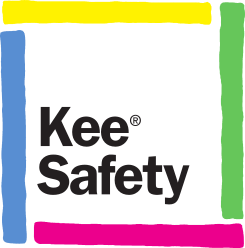 Add My Company
Add My Company
Sign In
Guide to Keeping Workers on A Roof Safe
14-10-2022

Guide to Keeping Workers on A Roof Safe
Working on roofs is inherently dangerous. According to the HSE’s report, in the UK in 2021/22, 29 work related fatal injuries were due to falls from a height, accounting for 24% of all worker deaths over the year.
Although existing legislation advises workers to avoid carrying out work at height whenever and wherever possible, sometimes it’s unavoidable. Roof repairs or maintenance on rooftop equipment like heating and air conditioning units are just a few examples of tasks that can’t be carried out at ground level.
While work on rooftops - and the risk that comes with it - can’t be fully avoided, the risks posed can be minimised by ensuring all work is planned out fully and that the right equipment is used.
Legislation such as the Health and Safety at Work Act and the Work at Height Guidelines put the legal onus on employers, site owners, and other key duty holders to ensure work is properly planned and supported with the right training and equipment. Employees are required to follow guidelines put in place and use the equipment provided, but ultimately these key duty holders are the ones held responsible if something goes wrong.
If the Health and Safety Executive discovers that work is being carried out without the proper precautions in place, they have the power to shut down the work. If a serious injury or death occurs, and an investigation finds that the rules weren’t being followed, it will be those in charge that find themselves in hot water.
Thankfully, despite the severity of the risk that comes with working at height, it’s quite straightforward to put the right controls in place to minimise exposure to employees. In this article, we’ll take a look at some of the dangers likely to be encountered on rooftops, and the roof safety equipment needed to overcome them.
Rooftop Obstacles
Modern roofs feature a range of obstacles that can pose a threat to workers accessing the roof, and make it difficult to safely navigate the roof itself.
Common obstacles include:
Piping
Cable trays
Changes in roof level
Plant and equipment
These obstacles can be a trip or even fall hazard, putting the lives of workers accessing the roof at risk.
To overcome these obstacles and protect employees from the risk posed, you can invest in a rooftop stepover solution. These allow for safe access over the obstacles and ensure employees can safely traverse the rooftop.
Rooftop stepovers come in a few different forms depending on requirements. The Kee Safety's Bespoke Step Over Platform, for example, is built from Kee Klmap galvanised or Kee Lite aluminium fittings with treads made of glass reinforced nylon. Thanks to its modular design, it can remain freestanding or be fixed to the rooftop, and can also be custom-built to virtually any configuration.
Unprotected Roof Edges
One of the biggest risks on rooftops is unprotected edges, which open up a huge potential fall risk for those accessing the roof.
Personal fall protection solutions such as harnesses and anchors are one option, but these require training to use safely, and must be regularly inspected before use, which may not be feasible in all circumstances. Instead, you could consider a roof edge protection guardrail solution such as Kee Guard. This type of fall protection system can be fixed to the roof or left freestanding, protecting workers from the dangers posed by the roof edge. These solutions are ‘always-on’ meaning they don’t require any specialist training to be effective.
Although not all roofs are suitable for collective edge protection, the work at height hierarchy states that collective solutions should be given priority over personal solutions wherever possible. By opting for a modular solution like Kee Guard, you can ensure the system is designed bespoke to your needs instead of relying on off-the-shelf welded systems.
Uneven Surfaces and Hidden Hazards
Each roof type comes with its own unique challenges. For example, standing seam roofs are uneven and can be a serious trip hazard to workers attempting to navigate the roof.
More concerning, though, is the presence of hidden dangers, such as rooflights. Although these are designed to take an average person’s weight when installed, weather and sun exposure can make them brittle over time, and bird droppings and other detritus can cover them up, leaving a serious, hidden fall risk.
Both of these dangers can be tackled with a rooftop walkway solution, such as Kee Walk. These provide a safe, demarcated route across the roof, protecting both the worker and the roof surface itself from damage.
As with the rest of the Kee Safety's product range, Kee Walk is modular and can be designed to suit any type of roof, and can even be combined with other Kee Safety products to form a holistic rooftop safety solution.
Entrance and Exit Points
Most people understand that working at height on a roof can be dangerous, but many do not consider that accessing and exiting the roof can be just as risky. Even if a rooftop has full edge protection, it’s likely that space will need to be left to allow for access from ladders or stairs. These voids can once again open those accessing the roof up to the risk of falls.
Although there are many ‘traditional’ on-site solutions to this, ranging from chains to planks of wood, these are ineffective and - crucially - require users to close them behind themselves.
Instead, you should invest in a self-closing rooftop safety gate, such as the Kee Gate. These gates close open voids while still allowing access, and the spring-loaded mechanism means they close automatically behind each user, removing the additional risk of user error.
The Right Equipment Is Key
Although we can never entirely remove the risks posed by working on roofs, we can minimise them with the right safety equipment.
Everyone has a right to go to work and come home safely at the end of the day, and the responsibility is on key duty holders to ensure employees are given the right equipment to do the job safely.
For more information on our rooftop safety solutions, or discuss safety solutions for your roof, get in touch today.
For more information on Guide to Keeping Workers on A Roof Safe talk to Kee Safety
Enquire Now
List your company on FindTheNeedle.

